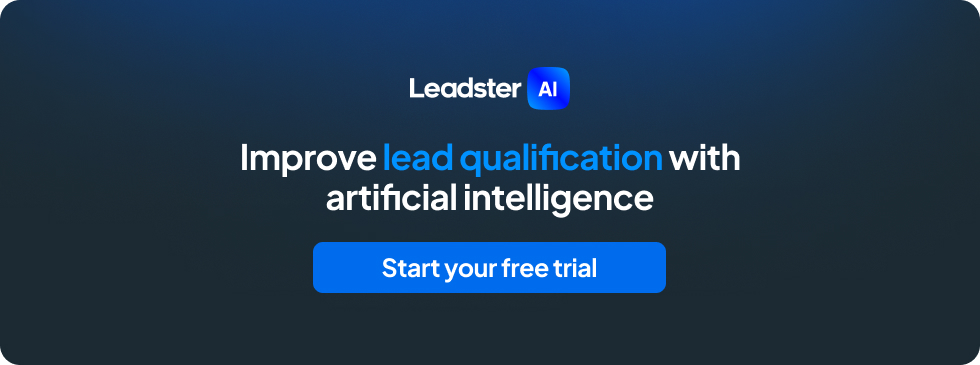Is the SaaS Business Model Right for Your Company?
The article today is relevant for many people and situations. Understanding the SaaS business model today is crucial for navigating our increasingly complex and, paradoxically, fast-paced business environment.
You might be a developer with a product or app idea wanting to know how to start a startup. Maybe you already have a startup and want to improve your process and increase your sales.
Or perhaps you’re a software developer working with the traditional sales model, seeing your operational costs rise while the value of contracts remains the same or changes very little.
For all these cases, the SaaS business model is a great solution. That’s why, as we’ll see throughout the article, it’s so popular and has become the standard in software sales.
This standard is also very interesting to analyze. No matter your situation, you might be applying some basic principles of the SaaS business model right now without even knowing it.
But today, you will find out. And with this discovery come many KPIs, indicators, metrics, and digital marketing strategies to help you achieve even more success.
Shall we begin?
What is the SaaS Business Model?

A SaaS business model is one where software is sold not as a product, but as a service.
According to Gartner’s glossary, SaaS is “a software owned by the vendor, sold, delivered, and maintained by them. The vendor delivers the application in a common set of code and data definitions, and the software is consumed under a one-to-many contract model.”
In development terms, “one-to-many” means that all customers using the software follow a standard set by the developer regarding the database and the product’s source code.
Essentially, SaaS is a business model where customers pay to use the software, with the responsibility for its maintenance resting entirely with the developer.
In the past, it was a bit different. You bought the application itself, usually through physical media sold directly at retail or delivered by mail.
In the old model, the responsibility for installing, updating, and maintaining the software was on the user, and the program was physically installed on computers.
With SaaS, everything is done via the cloud. Any computer or smartphone with internet access can use the application.
There are also differences in payment: while in the previous model you paid for the program once and that was it—except for some exceptions—SaaS sales involve recurring payments.
This makes SaaS more accessible, as software prices easily exceeded the value of the minimum wage by the late 1990s and early 2000s.
Basically, this is the SaaS business model. But there are some fundamental differences between B2B and B2C modes.
Let’s discuss them in detail?
SaaS B2B
SaaS B2B is when a company develops software and sells it for use by other businesses.
It’s the B2B standard you already know: companies buying from other companies in a formalized supply process.
The main difference between SaaS B2B and SaaS B2C is the complexity of these sales. They take longer, involve higher and more customized contracts, and require specific strategies that mix product focus, sales focus, and marketing focus.
SaaS B2B works strongly with concepts like Product-Led Growth and Inbound Marketing, with Content Marketing being a strong ally in boosting these two methodologies.
By far, SaaS B2B is the most complex in terms of generating leads and sales. These methodologies need to work together to achieve good results consistently and swiftly.
Some examples of SaaS B2B business models include:
- Rock Content;
- Shopify;
- Salesforce;
- Slack;
All these SaaS companies will be explored in more detail later in the article, don’t worry.
And another thing: we here at Leadster also use the SaaS business model. Visiting our site, you’ll see in practice everything I’m explaining here.
We also have some resources specifically focused on SaaS, and some B2B SaaS success stories that will spark plenty of ideas. See below:
🤓 Also Read: How to Do B2B SaaS Marketing? Complete Guide and 10 Examples
SaaS B2C is a bit different. Let’s learn more about it now:
SaaS B2C
SaaS B2C is targeted directly at the end consumer, who is an individual.
Here, there are various categories of products in absolutely diverse segments. Examples include:
- Live service games offered by platforms like Steam under the GaaS—Games as a Service—model;
- The paid version of ChatGPT, which operates well between B2B and B2C;
- Mobile apps.
We could also mention streaming services like Netflix and Prime Video, but that leads us to another discussion: what’s the difference between SaaS, PaaS, and IaaS?
What is the Difference Between SaaS, IaaS, and PaaS?

The SaaS business model is constantly reinventing itself. In 2023, many companies combine aspects of PaaS, IaaS, and SaaS into a single customized service.
Take Netflix, for example. Is it software? A platform? An infrastructure? What are you paying for when you access the application?
Although the boundaries are becoming increasingly transparent, it’s important to understand what each of these acronyms means and delivers so that your SaaS business model can also navigate these areas.
Albert Barron, who now works at Google and previously at IBM, introduced a very interesting concept in 2014 to help us understand these acronyms: Pizza as a Service. See the image:
The graph relates the SaaS business model and others to eating a pizza:
- On-premise: making a pizza at home;
- IaaS: taking a pre-made pizza home;
- PaaS: ordering pizza delivery;
- SaaS: going to the pizzeria.
This analogy will help you navigate the next topics, where we delve a bit more into these concepts. Come with me:
What is the Difference Between SaaS and IaaS?
IaaS, or taking a pre-made pizza and cooking it at home, stands for Infrastructure as a Service.
This model is quite different from SaaS. Here, what is sold is the infrastructure your company uses.
Examples include AWS, Amazon’s database service and server rental. Other examples are Azure, Oracle, and even Algar Tech in Brazil.
The difference between SaaS and IaaS is clear. In IaaS, there is no dedicated software development as a product.
At the same time, there is no infrastructure—i.e., physical equipment—contracted in the SaaS business model.
What is the Difference Between SaaS and PaaS?
Here is where the difference starts to get very subtle. Take Netflix, for example: are you paying for the streaming software or the streaming platform?
SaaS delivers a finished product that you can use according to its functionalities and limitations.
PaaS tends to be a bit more customizable by the user. Salesforce, for example, allows you to create different apps through the platform.
The line between SaaS and PaaS is increasingly thin. Nowadays, most SaaS companies work with some PaaS elements and vice versa.
But what you need to understand is that PaaS offers greater customization possibilities, at the cost of a steeper learning curve.
Meanwhile, the SaaS business model delivers ready-to-use software that is more specific and targeted, focusing on the skills the user already has in their field.
Understanding the SaaS Business Model

All set: we understand the differences between the business models and are ready to delve into the SaaS business model.
This is the most important part of the article, followed by the next topic as well. Here, we will explore in more detail how SaaS companies offer their services, how they charge for them, and how they maintain them.
In the next section, we’ll dive into Product-Led Growth, which is currently the main way to sell a SaaS product, especially in B2B.
Come with me:
The SaaS Canvas
A Canvas is a framework that outlines the key features of a business model.
It is a standardized model that always works from the following descriptors:
- Key Partnerships;
- Key Activities;
- Value Proposition;
- Customer Relationships;
- Channels;
- Customer Segments;
- Cost Structure;
- Revenue Streams.
In the SaaS business model, each of these points is filled in according to your operational reality. The Business Model Analyst portal does a good job filling in these gaps in the image below:
Here’s the Canvas transcription:
- Key Partnerships: infrastructure providers, especially IaaS and PaaS;
- Key Activities: platform development and maintenance; sales and support;
- Value Proposition: access to the software with maintenance, support, and updates included;
- Customer Relationships: self-service PLG model and/or dedicated support; conferences and events;
- Channels: internet and digital marketing; sales force;
- Customer Segments: other businesses;
- Cost Structure: platform development and maintenance; partner infrastructure; team and sales;
- Revenue Streams: monthly subscription.
The only point this Canvas does not include is the B2C segment—it is more focused on B2B. However, these points can be adapted to both business models with very few changes.

SaaS Customer Empathy Map
An empathy map is a tool aimed at creating your persona and identifying your target audience.
Through it and the research you conduct, you can fully map out your consumer’s profile.
Of course, each company will have its own empathy map, and it would be irresponsible to provide a ready-made one—it all depends on your segment, market, and what you are offering.
See the model below and apply it to your research!
What is PLG – Product-Led Growth?

It’s time to discuss the biggest trend in the SaaS business model in recent years: Product-Led Growth (PLG).
This philosophy prioritizes your product and the user’s autonomy above all else. Through it, you can reduce costs associated with a large team while still generating revenue through the ease of product acquisition.
The basics work like this: you concentrate most of your software acquisitions in a self-service model.
Accompanying PLG is strong content production to assist your potential customer throughout their Buying Journey and to increase effectiveness in the Marketing Funnel.
In this model, the customer handles most of the process directly on your website, with little involvement from the sales team.
Nowadays, it’s quite rare to find a company within the SaaS business model that doesn’t use at least the most basic principles of PLG.
But to delve deeper into the subject, we need to make an important distinction: what is the difference between PLG and other methods, and how they often end up working together.
Let’s explore:
Differences Between PLG, MLG, and SLG
First, we need to define what these terms mean:
– Product-Led Growth (PLG): growth driven by the product, with more user autonomy in making acquisitions;
– Sales-Led Growth (SLG): growth driven by sales, with greater focus on the actions of salespeople and commercial representatives;
– Marketing-Led Growth (MLG): growth driven by marketing, where the key is positioning yourself as the leading authority on the subject and working on demand generation.
Today, the main focus of the SaaS business model is on PLG—this is the most current trend and what is driving major startups in the field.
However, it’s important to understand that it rarely operates alone.
This is because many sales are quite complex and customized. For example, it’s impossible to implement an ABM strategy in a SaaS business model without blending PLG and SLG.
This interaction is actually a fundamental part of PLG. That’s why most B2B SaaS companies offer plans that can be signed up directly on their site and others that require support from a sales representative.
Why Do Modern SaaS Companies Prefer PLG?
PLG is highly scalable and has much lower costs compared to the other two models.
Take WeTransfer’s MLG efforts as an example. But a side note: it’s very rare to find companies that use only PLG, as we discussed earlier.
WeTransfer’s strategy combines PLG and MLG. They have a blog dedicated to culture and the arts, topics that greatly engage their user base. At the same time, the service is contracted directly through the site, without involving salespeople.
But back to MLG: for their blog to function well, WeTransfer spends a lot on journalists. They’ve interviewed Willie Nelson and Marina Abramović, for instance. This is not cheap.
At the same time, SLG requires a high cost for salespeople, process managers, leaders, data analysts, etc.
The reduced cost and scalability are the main motivators for PLG in the SaaS business model. Now let’s look at some real companies to understand how exactly this happens.
Look:
5 Successful Companies Adopting the SaaS Model

To understand the SaaS business model well, we need to analyze companies that adopt it today.
And the best part is that this isn’t difficult. You can do a super complete benchmark using just Google. The SaaS B2B model is one of the most popular in digital marketing today.
It’s important to note, however, that many of the examples I’ll show you here are at the extreme ends of success in the SaaS business model.
To conduct your benchmark, you need to understand which companies most resemble yours. From there, you can start your analysis.
In the examples below, we’ll look at some simplified benchmarks together. Follow this model with your competitors when creating yours, okay?
Rock Content
Rock Content also follows a path similar to Resultados Digitais, especially now that content marketing is a standard in any marketing strategy.
The truth is, it always has been. But with RD driving inbound marketing in Brazil as part of its demand generation strategy, content gained a significant focus in the market, and Rock Content emerged to standardize it.
In the beginning of its operation, a 100% PLG approach was very challenging due to the low marketing maturity in Brazil in 2013. Rock had salespeople who needed to explain the concept of content marketing and lead generation, show results, and only then might close a deal.
Today, the story is quite different. Everything revolves around the product, with no mediation from Rock itself. You can hire your writers directly through the platform and start working with maximum autonomy.
Shopify
Shopify operates in one of the most PLG-oriented models you’ll find in SaaS: the creation of e-commerce sites and pages for selling digital products.
If you’ve read everything up to this point, you’ll know that this SaaS business model isn’t entirely SaaS: it shares many similarities with PaaS, Platform as a Service, and IaaS — Infrastructure as a Service.
But I wanted to include this example because it’s worth understanding how companies like this find their niche and succeed. Let’s consider how Shopify addresses the three methodologies:
– SaaS: The product provides the key features of a ready-made site — checkout capabilities, sales dashboards, customer tracking, custom analytics, etc.
– PaaS: You build your site from scratch on a dedicated platform.
– IaaS: Shopify guarantees the infrastructure for database management, photo and video storage, and the functioning of your site.
This is a very important lesson for those entering the SaaS business model world: what’s crucial isn’t which of the three you are, but what your tool solves for your ideal customer.
Slack
Slack is one of the most interesting platforms to write about, especially because it’s open right now and our team spends the day chatting on it.
It’s one of the most used corporate chat tools today, along with Microsoft Teams and Google Hangouts.
Slack was designed to be interactive and simple to understand and use. Because of this, its sales process entirely relies on PLG.
Everything needs to be simple in Slack: from onboarding to daily use. Therefore, there’s no possibility of working with an approach that focuses more on sales and less on the product.
Slack also uses one of the most interesting strategies in the SaaS business model: heavy investment in converting free users to paying ones.
According to the latest SaaS Benchmark by OpenView Partners (a U.S. venture capital firm), this is the channel that converts paying users the most in the SaaS model.
However, a Corporate plan is still essential for any SaaS business. On Slack’s own site, you can contact the sales team to discuss more customized solutions for your company.
Salesforce
Salesforce is a great example of PaaS that behaves like SaaS and vice versa.
It offers simple solutions that you can purchase directly from the site, like the pre-built Sales Cloud CRM.
But at the same time, Salesforce also provides its platform for those wanting to create their own apps — and with it, Trailblazer, its training platform.
Salesforce’s uses are vast and encompass a bit of PaaS, IaaS, and SaaS. This is because the product is enormous, truly massive, and can be used for a wide range of functionalities.
What Are the Benefits of the SaaS Business Model?

With everything you’ve read so far, the SaaS business model should be fairly easy to understand, right?
I imagine it might not be 😅 As we’ve seen, this business model isn’t black and white, nor does it have commandments written in stone.
The truth is that SaaS varies depending on the company and the product. The focus today goes well beyond Product-Led Growth and moves towards Customer-Led Growth — focusing on what your customer needs.
So, as complicated as SaaS interactions might seem, they aren’t all that complex: it all depends on what your customer needs and how your product addresses their pain points.
If you’re still not convinced to enter the SaaS business model, here are a few more arguments to guide you in that direction. Follow along:
High Scalability
The SaaS business model offers enormous scalability due to its simplified, digital-focused structure.
Imagine if you worked in logistics: to expand, your investment would need to be in the millions for fleet expansion.
In the SaaS business model, this doesn’t exist: investment is still necessary, but it is much lower and tied to your recurring monthly and annual revenue.
This data-driven approach allows you to understand at any moment — often in real-time — your situation and whether expanding your features is feasible.
In most cases, due to the low investment, it is. The low operational cost of SaaS companies also contributes to this.
Lower Operational Costs
Up above, in the SaaS business model Canvas, we saw that one of its main partners is IaaS platforms. And this is no coincidence.
Through these platforms, it is possible to significantly reduce operational costs for any company, but especially for those working in the SaaS business model.
This is because such companies need very robust infrastructure. Your platform might suddenly gain a huge number of users overnight, and your server needs to handle the load.
Owning a data center is expensive, and you also need highly qualified professionals to manage it.
Of course, this is just one aspect that reduces costs. There are several others: reduced staff, no need for a physical headquarters (everyone can work remotely), lower sales costs, etc.
Highly Accessible
Accessibility is one of the highlights of the SaaS business model.
Accessibility to test, to hire the service, to implement and use it: this is the essence of PLG and the reason for its great popularity today.
The more accessible your product is, the more users you’ll have. But of course, there are quite complex products, especially in the B2B segment.
In these cases, the SaaS model works by adding extra accessibility to the process, and the hybrid PLG and SLG model is also a tremendous help in this regard.
More Available Data
We recently launched the 2024 Lead Generation Panorama, a comprehensive resource with data on lead generation across various segments.
Note: all the data came from our clients. This material is very rich, generates many leads, and is already a reference in marketing studies.
This is because, as a SaaS product, we have a vast amount of data on who uses Leadster.
This is one of the greatest advantages of the SaaS business model. Since you control your product, you can have highly relevant usage data.
For example, you can find out if people are using all your features or which features people who canceled their contracts weren’t using.
Based on this information, you have much greater strategic control over both your marketing and product development.
Ease of Pivoting
And if everything goes wrong?
A logistics company, following the previous example, wouldn’t be able to pivot from trucks to motorcycle deliveries without selling its warehouses and trucks. And this process takes months to years.
In the SaaS business model, pivoting is quick and easy. That’s why most startups follow this model: failing fast is one of its main characteristics.
If a feature isn’t working, one or two seven-day sprints can resolve the issue. If the product itself isn’t working, it’s possible to update it completely without blowing the budget.
And in the complex B2B market, this is absolutely necessary. And speaking of that, don’t leave yet; I have one last message that will interest you.
We’ve talked a lot about B2B in this article today. But I wanted to invite you to understand more of the SaaS proccess by testing our own product.
We are a SaaS company and we have a product led growth approach to it. You can understand the model better by understanding us.
Just click on this link. Everything else you’ll find out along the way. Our free trial lasts for 14 days and no credit card is required.
See you there!







